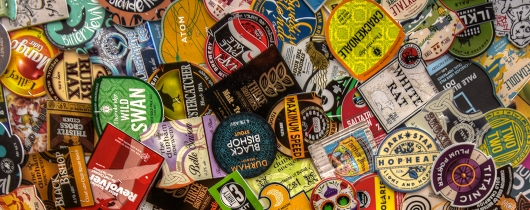Branded | De Marca

Stigmata of St. Francis of Assisi (St. Robert Bellarmine)
Galatians 6:14-18; Luke 9:23-26
We hear a lot today about branding. Corporations and advertisers spend billions trying to convince us that their products and services will mark us as beautiful, successful, popular, sexy, relevant, etc. “Influencers” make themselves brands and try to monetize their popularity by essentially becoming human billboards and commodities.
The irony, of course, is that we think of branding as the ultimate form of self-expression. But often it is more a sign of what or who owns our time, money, attention, and aspirations. Cattle are branded to indicate who owns them. Enslaved people used to be branded for the same reason. The Church uses a Latin word for a “brand” or “mark,” stigmata, to describe the marks of the crucified Christ that have blessed and burdened only a few people. St. Pio of Pietrelcina (Padre Pio) is the most famous modern example.
But nearly seven centuries before Pio, St. Francis of Assisi received the stigmata. It was a sign of his radical love for and conformity to the poor, humble, chaste, and crucified Christ. For years he had taken up his cross and followed Jesus. In 1224, two years before his death, he was branded with the mark of the one who owned his heart and soul. He died, telling his brothers: “I have done what was mine to do. May Christ teach you what is yours.”
As followers of Jesus, we pray for the grace of being branded by him. Our flesh may never show it, but we can all receive the stigmata in our hearts. - jc
----------------------------------------------------------------------------------------
Estigmas de San Francisco de Asís (San Roberto Belarmino)
Gálatas 6:14-18; Lucas 9:23-26
Hoy se habla mucho de la marca. Las corporaciones y los anunciantes gastan miles de millones tratando de convencernos de que sus productos y servicios nos marcarán como bellos, exitosos, populares, sexy, relevantes, etc. Los "influencers" se convierten en marcas y tratan de rentabilizar su popularidad convirtiéndose esencialmente en vallas publicitarias y mercancías humanas.
La ironía, por supuesto, es que pensamos en las marcas como la forma definitiva de autoexpresión. Pero a menudo es más una señal de qué o quién es el dueño de nuestro tiempo, dinero, atención y aspiraciones. El ganado se marca para indicar quién es su dueño. La gente esclavizada solía ser marcada por la misma razón. La Iglesia utiliza una palabra latina para designar una "marca" o "señal", los estigmas, para describir las marcas de Cristo crucificado que han bendecido y cargado sólo a unas pocas personas. San Pío de Pietrelcina (Padre Pío) es el ejemplo moderno más famoso.
Pero casi siete siglos antes de Pío, San Francisco de Asís recibió los estigmas. Fue un signo de su amor radical y su conformidad con el Cristo pobre, humilde, casto y crucificado. Durante años había tomado su cruz y seguido a Jesús. En 1224, dos años antes de su muerte, fue marcado con la marca del que era dueño de su corazón y de su alma. Murió diciendo a sus hermanos: "He hecho lo que me correspondía hacer. Que Cristo os enseñe lo que es vuestro".
Como seguidores de Jesús, pedimos la gracia de ser marcados por él. Puede que nuestra carne nunca lo muestre, pero todos podemos recibir los estigmas en nuestros corazones. - jc




